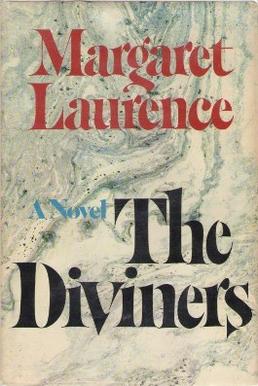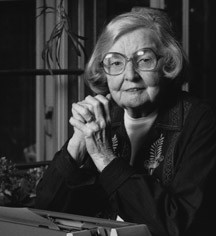
Jane Urquhart, LL.D is a Canadian novelist and poet. She is the internationally acclaimed author of seven award-winning novels, three books of poetry and numerous short stories. As a novelist, Urquhart is well known for her evocative style which blends history with the present day. Her first novel, The Whirlpool, gained her international recognition when she became the first Canadian to win France's prestigious Prix du Meilleur Livre Etranger. Her subsequent novels were even more successful. Away, published in 1993, won the Trillium Award and was a national bestseller. In 1997, her fourth novel, The Underpainter, won the Governor General's Literary Award.
Canadian literature is written in several languages including English, French, and to some degree various Indigenous languages. It is often divided into French- and English-language literatures, which are rooted in the literary traditions of France and Britain, respectively. The earliest Canadian narratives were of travel and exploration.
Sandra Louise Birdsell, CM is a Canadian novelist and short story writer of Métis and Mennonite heritage from Morris, Manitoba.
Bonnie Burnard was a Canadian short story writer and novelist, best known for her 1999 novel, A Good House, which won the Scotiabank Giller Prize.
Lynn Crosbie is a Canadian poet and novelist. She teaches at the University of Toronto.

John Hugh MacLennan was a Canadian writer and professor of English at McGill University. He won five Governor General's Awards and a Royal Bank Award.
Joy Nozomi Kogawa is a Canadian poet and novelist of Japanese descent.
Marian Ruth Engel was a Canadian novelist and a founding member of the Writers' Union of Canada. Her most famous and controversial novel was Bear (1976), a tale of erotic love between an archivist and a bear.

Aritha van Herk,, is a Canadian writer, critic, editor, public intellectual, and university professor. Her work often includes feminist themes, and depicts and analyzes the culture of western Canada.
Sheila Martin Watson was a Canadian novelist, critic and teacher. She "is best known for her modernist novel, The Double Hook." The Canadian Encyclopedia declares that: "Publication of Watson's novel The Double Hook (1959) marks the start of contemporary writing in Canada."
John Gordon "Jack" McClelland CC was a Canadian publisher. He was known for promoting Canadian writers as president of the McClelland and Stewart publishing house.
Susan Swan is a Canadian author, journalist, and professor. Susan Swan writes classic Canadian novels. Her fiction has been published in 20 countries and translated into 10 languages. She is the co-founder of the Carol Shields Prize for Fiction, the largest literary award in the world for women and non binary fiction authors, and received an Order of Canada in 2023 for her writing and its contribution to Canadian literature and for mentoring the next generation of writers.

The Diviners is a novel by Margaret Laurence. Published by McClelland & Stewart in 1974, it was Laurence's final novel, and is considered one of the classics of Canadian literature.
Joan Louise Barfoot is a Canadian novelist. She has published 11 novels, including Luck (2005), which was a nominee for the 2005 Scotiabank Giller Prize, and Critical Injuries (2001), which was longlisted for the 2002 Man Booker Prize. Her latest novel, Exit Lines, was published in 2009.

Elizabeth Grace Hay is a Canadian novelist and short story writer.
Douglas Glover is a Canadian writer. He was raised on his family's tobacco farm just outside Waterford, Ontario. He has published five short story collections, four novels, three books of essays, and The Enamoured Knight, a monograph on Don Quixote and novel form. His 1993 novel, The Life and Times of Captain N., was edited by Gordon Lish and released by Alfred A. Knopf. His most recent book is an essay collection, The Erotics of Restraint: Essays on Literary Form.

Edna Staebler was a Canadian writer and literary journalist, best known for her series of cookbooks, particularly Food That Really Schmecks. While the book contains Mennonite recipes, the content also includes stories and anecdotes about life and home cooking in the rural areas of the Waterloo Region.
Christl Verduyn is Professor of English Literature and Canadian Studies at Mount Allison University. She is the 2006 recipient of the Governor General's International Award for Canadian Studies, awarded by the International Council for Canadian Studies. She is cited in particular for the integration of her scholarship with the larger community and for exceptional contributions to the study of Canadian women's writing, in both English and French.
Heather Margaret Robertson was a Canadian journalist, novelist and non-fiction writer. She published her first book, Reservations are for Indians, in 1970, and her latest book, Walking into Wilderness, in 2010. She was a founding member of the Writers' Union of Canada and the Professional Writers Association of Canada, and launched the Robertson v Thomson Corp class action suit regarding freelancers' retention of electronic rights to their work.

Linda Holeman is a Canadian author of fiction.








